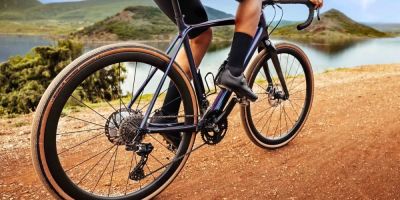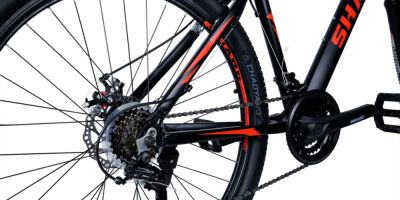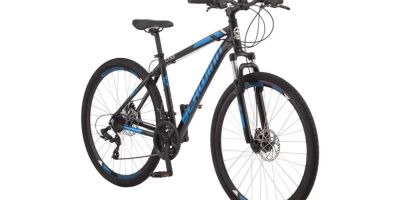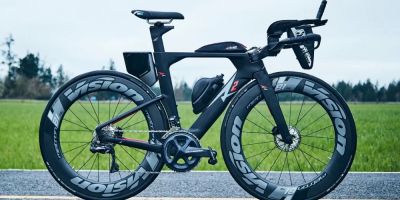Why Choosing the Right Helmet is Crucial for Mountain Biking
When I first started mountain biking, I didn’t realize how important my helmet would be. It wasn’t just about looking cool or staying safe—it was about making sure I could enjoy the ride while keeping my head protected from unexpected falls. Over time, I’ve come to appreciate just how much technology and design go into creating a great helmet for this adventurous sport. Let’s dive into why choosing the right helmet for mountain biking is so crucial and how it can make a big difference in your biking experience.
Safety First: The Importance of a Helmet
Mountain biking is one of those sports where anything can happen. You might be cruising down a trail, feeling the wind in your face, when suddenly, a rock or tree root causes you to lose control. That’s where a helmet comes into play. A good mountain biking helmet isn’t just about keeping you cool—it’s your first line of defense against serious head injuries.
The risk of falling or crashing is always present when you’re riding on rugged trails, but wearing a quality helmet can dramatically reduce the risk of a head injury. Modern helmets are designed with materials that absorb shock and protect you from impacts. Plus, many of them come with features that improve comfort, ventilation, and fit, so you can ride longer without feeling fatigued or overheated.
What Makes a Great Mountain Biking Helmet?
After years of testing various helmets on the trails, I’ve discovered a few key factors that make a mountain biking helmet stand out. Let’s break down these essential features and what to look for when shopping for your next helmet.
1. Protection: The Core of Every Helmet
The primary function of any helmet is to protect your head, but not all helmets offer the same level of protection. The best mountain biking helmets have been rigorously tested to meet safety standards. They are usually designed with materials such as EPS (expanded polystyrene) foam that absorbs shock and disperses the energy from impacts.
Some helmets also feature MIPS (Multi-directional Impact Protection System), which reduces rotational forces during a crash. This technology helps prevent brain injuries by allowing the helmet to slightly rotate during an impact, reducing the amount of force transferred to the brain.
2. Ventilation: Stay Cool on the Trails
If you’ve ever gone on a long mountain biking trip, you know how sweaty and hot it can get. That’s why ventilation is crucial in a helmet. A well-ventilated helmet will keep your head cool and dry, which improves comfort during long rides.
Look for helmets with strategically placed vents that allow air to flow through, especially around the top and sides. Some helmets come with adjustable vent systems, allowing you to control the airflow depending on the weather or your preference.
3. Fit and Comfort: Make Sure It’s Snug
Wearing a helmet that doesn’t fit properly can be uncomfortable and dangerous. A helmet that’s too loose can shift during a fall, while one that’s too tight can give you headaches and distractions while riding. The best helmets are adjustable and have multiple size options to ensure a snug and secure fit.
Look for helmets with adjustable straps, a dial-fit system, or a removable and washable interior padding to keep things comfortable. The padding can also absorb sweat, which adds another layer of comfort during intense biking sessions.
4. Durability: Helmets Built to Last
Mountain biking helmets need to be tough. The trails can be rough, and a helmet must withstand bumps, falls, and scratches without losing its protective capabilities. Most high-quality helmets are built with durable outer shells made from polycarbonate or ABS plastic, which add strength without adding much weight.
Another factor to consider is the lifespan of your helmet. Helmets generally last around 3-5 years, depending on how often you use them. If you’ve had a crash or impact, it’s important to replace the helmet, even if there are no visible cracks, as the foam inside may have been compromised.
5. Weight: Don’t Let Your Helmet Weigh You Down
When you’re out on the trails, every ounce matters. That’s why lightweight helmets are ideal for mountain bikers who need agility and freedom of movement. A heavy helmet can make your neck sore during long rides and slow you down when you’re navigating tricky terrain.
Modern helmets are designed to be lightweight without sacrificing protection. Materials like in-mold construction, where the outer shell is fused with the foam liner, help reduce weight while maintaining strength and durability.
My Personal Favorite Mountain Biking Helmets
Over the years, I’ve tried out numerous helmets, but there are a few that consistently stand out. These helmets have the right mix of protection, comfort, ventilation, and durability. Here are some of my top picks for the best mountain biking helmets in 2025:
1. Giro Manifest Spherical Helmet
The Giro Manifest Spherical Helmet is a game-changer. With its MIPS Spherical technology, this helmet provides superior protection against rotational forces during impacts. The fit system is easy to adjust, and the ventilation is impressive—keeping your head cool even during the toughest climbs.
I’ve used this helmet on both smooth and technical trails, and I can confidently say it delivers excellent comfort and protection. The helmet’s sleek design is an added bonus, and the weight is light enough to keep you moving without feeling weighed down.
2. Bell 4Forty MIPS Helmet
The Bell 4Forty MIPS Helmet is a versatile option that offers great value for money. Its full coverage design ensures maximum protection, while the MIPS technology provides additional safety against rotational impacts. The helmet is well-ventilated and features a dial-fit system for easy adjustments.
This helmet is a great choice for riders who are just starting out or looking for a solid, all-around helmet for mountain biking adventures.
3. POC Tectal Race SPIN Helmet
If you’re looking for top-tier protection and performance, the POC Tectal Race SPIN Helmet is an excellent option. It comes with SPIN (Shearing Pad Inside) technology, which offers protection from both rotational and linear impacts. The helmet is lightweight, breathable, and incredibly comfortable, making it perfect for long days on the trail.
Each of these helmets offers a different combination of features and benefits, but all of them will give you the peace of mind you need while enjoying the thrills of mountain biking.
Final Thoughts on Mountain Biking Helmets
Choosing the best helmet for mountain biking is about finding the perfect balance between protection, comfort, ventilation, and fit. A helmet that fits you properly and keeps you cool will make your rides more enjoyable and safer.
Don’t rush the decision—take the time to try on different helmets, read reviews, and think about your specific needs. After all, your helmet is one of the most important pieces of equipment when it comes to mountain biking, and investing in a quality one can make all the difference in your riding experience.
Remember, safety is key, and with the right helmet, you’ll be able to tackle any trail with confidence.










